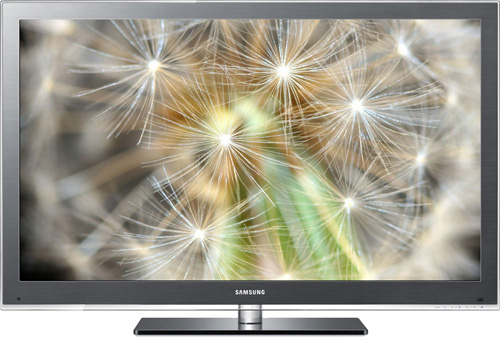FlatpanelsHD always includes suggested calibration settings in TV and monitor reviews. We receive many e-mails asking about optimal calibrated settings for different TVs so we thought we would post some universal calibration tips for beginners. Here are 5 simple tips to help you improve picture quality on pretty much any flat panel TV.
5 tips for better picture quality
A perfect display calibration requires both calibration equipment and experience but you can improve picture quality drastically even without. In this article we give you some general tips for TV calibration.
To calibrate means to optimize picture quality. Calibration is a necessity mainly because manufacturers boost image settings on TVs, and use small tricks such as higher color temperature, wrong gamma and overboosted colors, simply to stand out compared to the other TVs in the stores. Therefore the standard settings are seldom optimal. Pretty much any TV can benefit from better picture settings and don't you want the best possible picture quality from your TV?

A complete calibration requires testing/calibration equipment but you can get a decent result without
Below we give you 5 universal tips for a beginner calibration which applies to almost any flat panel TV today.
- Switch to the Film or Movie picture preset
The Movie / Film picture preset is typically found in the image settings menu but some TVs also have a picture preset button on the remote control. The Movie / Film presets is often better because its has more accurate color and gamma settings. Just by switching to this preset you can also greatly reduce the number of dynamic circuits and added artificial sharpness. The Movie / Film preset is optimized for dark rooms but you can increase the “backlight” setting option (sometimes called "brightness" if there is no "backlight" option in the menu) in the menu to compensate.
- Reduce brightness
Most flat panel TVs come pre calibrated with extreme brightness levels, and this is not contributing to picture quality nor energy consumption. So by reducing brightness to a natural level you can achieve more natural and less harsh pictures and at the same time save money on the power bill. Brightness is typically reduced with the “brightness” or “backlight” setting in the menu. Some TVs also have an automatic brightness sensor.
- Deactivate Dynamic Contrast
This tip also concerns noise reduction, advanced sharpness, edge enhancement, vivid colors, and various other"enhancements". You need to deactivate these picture systems simply because they are not helping you achieve the best possible picture quality. The systems have been created to compensate for a TV’s shortcoming but often new, and more annoying issues are introduced. Technologies such as 100/120 Hz may also create artificial looking images and most picture enthusiasts prefer to turn these systems off. Try yourself.
- Change the color temperature
Color temperature is a measurement the hue of the picture. A low color temperature results in warm (reddish) pictures and a high color temeprature results in cool (bluish) pictures on the screen. If you look out of your window on a sunny day you’ll notice that the world has a warm and reddish look. On a snowy day you’ll see colder and bluish colors. Today 99 % percent of flat panel TVs come pre-calibrated with a too high color temperature, resulting in too cold pictures. This is visual attraction for shoppers but in your living room you prefer accurate colors. Accurate colors on a flat panel TV equals a color temperature of 6500 Kelvin. Therefore it is recommended that you change color temperature in the picture settings menu to"warm". Sometimes you need to use the"Normal" setting for the best result. You should refrain from using the “Cold” setting because it's far from the 6500 Kelvin target. Please note that the Movie / Film picture preset often has a Warm color temperature setting as the default value.
- Find calibrated settings here on FlatpanelsHD
This last tip is the most effective of them all. In every FlatpanelsHD TV and monitor review we include our calibrated settings in a table. You can copy these settings to your own TV and thus optimize picture quality a lot. See the full list of reviews here: HDTV reviews.

TV calibration gives you a natural-looking and detailed picture
Take it to the next level
We have provided here some basic tips for TV calibration, but if you wish to take it one step further you can invest in a calibration disc such as the DVE HD Basic that gives you tips and tools to improve picture quality.
that gives you tips and tools to improve picture quality.
You can also buy a cheap calibrator such as the Spyder TV that is a user-friendly device with guides and tips. You place the calibrator on the screen to measure and calibrate different picture parameters.
that is a user-friendly device with guides and tips. You place the calibrator on the screen to measure and calibrate different picture parameters.
And if you want an even better result you can hire professional calibrator experts to take a look at your TV. This is recommended for high-end setups. It will also improve picture quality for those viewers watching HD channels through direct TV - especially sports broadcasts.
Find all calibrated TV settings in the TV reviews here.
that gives you tips and tools to improve picture quality.
that is a user-friendly device with guides and tips. You place the calibrator on the screen to measure and calibrate different picture parameters.